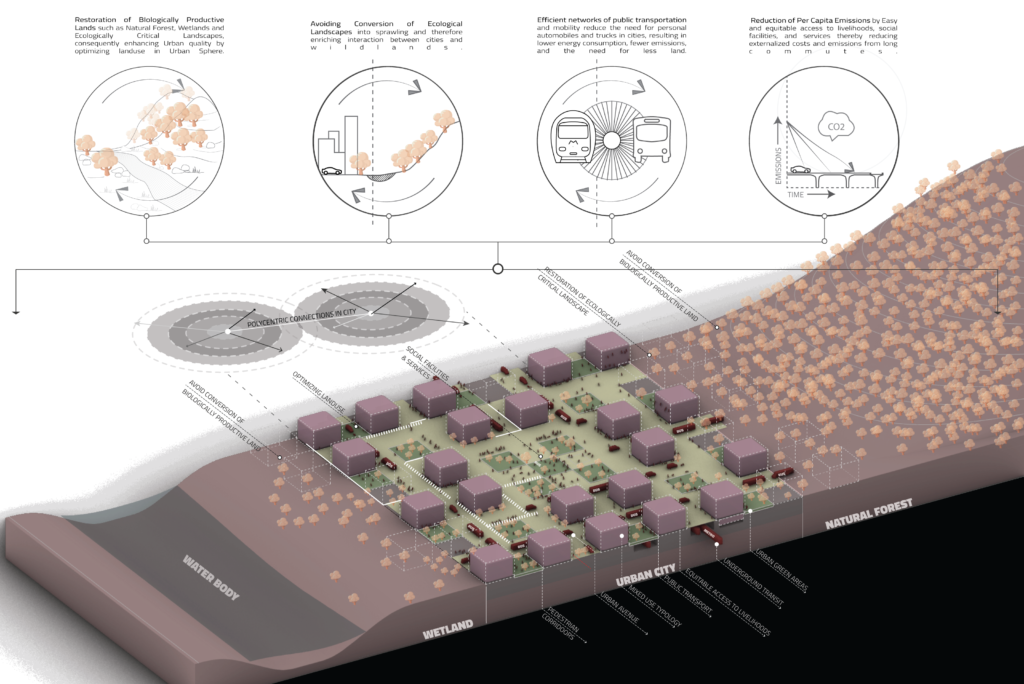|Toward Re-Entanglement: A Charter for the City and the Earth|
“Cities, when convivially organized and clearly bounded, are inherently efficient organisms. By reigning in their spatial extents, we avoid the conversion of biologically productive land into sprawling, infrastructurally attenuated, automobile-oriented hardscapes. Instead, we can optimize land already assigned to the urban sphere and thereby instill in it more profound value. Dense, mixed-use neighborhoods where citizens can live, work, and play enhance urban quality and reduce infrastructural requirements across all scales of urban inhabitation: exterior building envelopes and systems, when shared by multiple urban households, in multi-story buildings, reduce per capita embodied emissions; easy and equitable access to livelihoods, social facilities, and services reduce the externalized costs and emissions of long commutes. Efficient networks of mass transport and mobility de-emphasize the use of automobiles and trucks within the city, reducing the energy consumed, the pollution emitted, and the vast area of land required. That land, in turn, can be reassigned as public pedestrian corridors, and green spaces, and promote the careful restoration of natural forests, wetlands, and other ecologically critical landscapes. Dense and efficient polycentric cities can replace unconstrained urban sprawl, eliminate often neglected and undervalued urban peripheries, and clarify and enrich the interaction between those convivial cities and the healthy wildlands that border them.”

[Source : Indraneel Joshi and Shruti Sahasrabudhe]
The key to efficient and convivial cities is to reign in their spatial extents and focus on mixed-use neighborhoods. This allows citizens to live, work, and play in the same area, reducing the need for long commutes and the associated externalized costs. Additionally, this type of urban layout reduces the need for automobiles and trucks within the city, reducing energy consumption and pollution. By promoting public pedestrian corridors, and green spaces, and restoring natural landscapes, cities can become more efficient and convivial while also preserving the environment. Consequently, this chain leads to reduced per capita embodied emissions.

